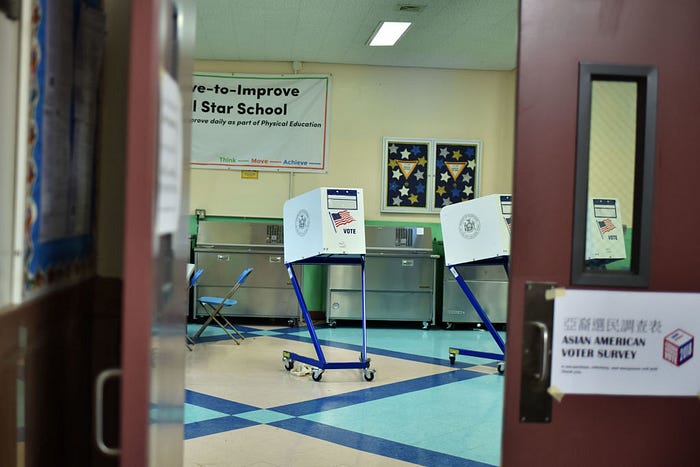Member-only story
MONITOR: Election 2020
The Coronavirus Will Cause Big Changes to Our Voting Habits
We need to band together not just for food and supplies

 COVID-19, otherwise known as the coronavirus, continues to spread at an alarming rate. This global pandemic has hit China, South Korea, Iran, Italy, and Spain the hardest. In the U.S., there are nearly 4,000 cases in 49 states, Washington, D.C., and Puerto Rico. With no vaccine on the horizon and the number of cases doubling every few days, extreme social distancing measures may be the greatest weapon to slow the spread. But because social distancing could also depress voter turnout in one of the most crucial election years in U.S. history, it’s more important than ever for voters to create a flexible voting plan and, in states where it’s possible, to consider voting from home.
COVID-19, otherwise known as the coronavirus, continues to spread at an alarming rate. This global pandemic has hit China, South Korea, Iran, Italy, and Spain the hardest. In the U.S., there are nearly 4,000 cases in 49 states, Washington, D.C., and Puerto Rico. With no vaccine on the horizon and the number of cases doubling every few days, extreme social distancing measures may be the greatest weapon to slow the spread. But because social distancing could also depress voter turnout in one of the most crucial election years in U.S. history, it’s more important than ever for voters to create a flexible voting plan and, in states where it’s possible, to consider voting from home.
To oust an administration that has ignored experts’ warnings about COVID-19 and severely botched the response, voters will need to head to the polls in droves. And to guarantee they make it there, they should create a voting plan ahead of time to figure out a few different options for how, when, and where they can cast their ballots. If transportation falls through, work hours shift, or, say, a pandemic erupts — having a practical voting plan in place that allows for contingencies can help. Above all else, voters must be agents in their process by arming themselves with information and carefully weighing all of their choices. Ultimately, every voter must do what’s best for them. “The decision to vote or not vote in person is an individual decision,” says Synge Tyson, a Protection and Advocacy for Individual Rights (PAIR) advocate at the Georgia Advocacy Office.
Voting in person at polling places could require a voter to be in close proximity to poll workers or other voters. This might concern some voters given that COVID-19 can survive on surfaces for days. Some states are taking drastic measures to minimize this by following the latest Centers for Disease Control and Prevention guidelines, which encourage voters to avoid the election rush by voting during nonpeak hours or, if possible, before Election Day. Early voting is currently available in 39 states and D.C. (It will be available in Virginia starting in November and in Delaware in 2022.)

